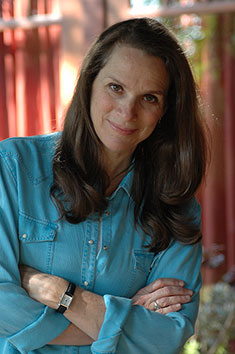Personally, he does not perform abortions as part of his practice, except for selective terminations of multiple pregnancies--which usually involve far-less-developed fetuses. He distinguishes the two types of abortions, saying second-trimester procedures are used to end an unwanted pregnancy whereas his selective terminations are saving a desperately wanted infant.
But what of the patient who simply doesn't want to carry twins? Or a couple that decides to terminate a triplet based on sex? His own ethics dictate that he will not reveal the sex of a fetus nor reduce healthy twins to singletons. And, like other doctors performing pregnancy reductions, he leaves the woman with twins whenever possible. He says he does it partly because it leaves a margin for error and partly because he wants to save every normal fetus that he can. Triplet pregnancies are in a gray area because medical data is scant. Tabsh has delivered some healthy triplets but has also seen many suffer from prematurity. Finally, the patient and her family must decide whether to choose abortion, he says.
"I don't decide these things," he explains. "If it were up to me, I'd probably decide against it. I'm just a technician."
Tabsh follows one other ground rule before performing the procedure at Northridge Hospital, a UCLA-affiliated hospital. He has taken the unprecedented step of insisting that patients meet with the hospital ethics committee to ensure a fully informed consent.
The first doctors who performed selective terminations did so during the second trimester to abort one of a pair of fetal twins afflicted with Down's syndrome. Now, the stakes are changing. When the procedure is done to reduce the number of fetuses, it is done early in the pregnancy, before it is possible to detect genetic anomalies. That creates new worries.
After he terminated one fetus in a set of triplets not long ago, lab tests revealed that the aborted triplet had Down's syndrome. It could have gone the other way. "I'm sure one day somebody's going to terminate a normal baby and leave an abnormal one behind," Tabsh says. "It's one of the problems we face with this (procedure)."
For both patient and doctor, the moral ambiguity lingers long after an irreversible decision is made. And both find ways to live with the questions that will not be put to rest.
Debbie Embree, 33, a former patient of Tabsh's who helped create a support group for patients facing such decisions, was carrying twins when Tabsh discovered that one of them was suffering from hydrocephalus at 23 weeks.
If the affected twin continued to grow, Tabsh told her, it could stunt the growth of the healthy one. On the other hand, terminating the baby with hydrocephalus could traumatize the other and result in losing both babies. The legal cutoff for an abortion was days away, and she and her husband had to decide over the weekend whether to agree to a selective termination.
"We said to Dr. Tabsh, 'Help us decide,' " she recalls. "He said, 'You and your husband have to make the decision.' And I really appreciate that. He doesn't inflict moral values on patients."
The Embrees elected termination for "Twin A." "Twin B" was born just two weeks later, weighing in at a scant 1 pound, 15 ounces. She was named in honor of the physician who delivered her after ending the life of her sister. Erica Tabsh Embree is now a healthy 2-year-old.
Debbie Embree often warns people who are considering a termination that there is residual pain. "I'll be at the mall now and see twins. I'll get that trigger inside. It can hurt. That baby was mine and I grieved for her."
But when the time is right, she plans on telling her daughter about her start in life. And she will show her the ultrasound pictures, taken in utero, of twins who shared bloodlines.
Tabsh's world is filled with the pain and joys of hundreds of parents like the Embrees. "Almost every day, you have to break bad news to one of these patients," he says, drawing a deep breath. "It's a catastrophe when you tell a patient: 'Your baby has anomalies, and some of these anomalies are not compatible with life.'
"But sometimes, some come in with a problem and end up delivering a healthy baby. And that's my reward."
No doubt the sweetest reward came with the birth of one of his own children. When his wife was pregnant with their fourth child, the amniocentesis results were normal. But 24 weeks into her pregnancy, Tabsh turned on his ultrasound machine to take a peek. And what he saw worried him.
It was a tiny bubble, later diagnosed as a bowel obstruction. But he knew the defect could be corrected surgically after delivery. The ultrasound exam allowed them to make arrangements with specialists for surgery soon after birth. Without it, Tarek, their Nintendo-loving 4-year-old, might not be alive today.
For Tabsh, it is reason enough to accept any moral conflict, to take the good with the bad.
published in the Los Angeles Times



